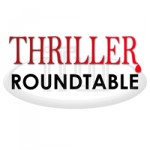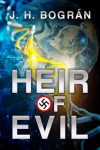

March 11 – 17: “What books are next to you when you write?”
 A dictionary or thesaurus? The Chicago Manual of Style? Or, maybe nothing writing-related at all? This week join ITW Members Kay Kendall, Eileen Cook, Sherry Knowlton, J. H. Bográn, Meghan Holloway and Jerry Amernic as they discuss which books are next to them when they write? Scroll down to the “comments” section to follow along. You won’t want to miss this!
A dictionary or thesaurus? The Chicago Manual of Style? Or, maybe nothing writing-related at all? This week join ITW Members Kay Kendall, Eileen Cook, Sherry Knowlton, J. H. Bográn, Meghan Holloway and Jerry Amernic as they discuss which books are next to them when they write? Scroll down to the “comments” section to follow along. You won’t want to miss this!
 Eileen Cook is a multi-published author with her novels appearing in eight languages. Her books have been optioned for film and TV. She spent most of her teen years wishing she were someone else or somewhere else, which is great training for a writer. She’s an instructor/mentor with The Creative Academy and Simon Fraser University Writer’s Studio Program where she loves helping other writers. Eileen lives in Vancouver with two very naughty dogs.
Eileen Cook is a multi-published author with her novels appearing in eight languages. Her books have been optioned for film and TV. She spent most of her teen years wishing she were someone else or somewhere else, which is great training for a writer. She’s an instructor/mentor with The Creative Academy and Simon Fraser University Writer’s Studio Program where she loves helping other writers. Eileen lives in Vancouver with two very naughty dogs.
 Jerry Amernic’s first novel was Gift of the Bambino, about a boy and his grandfather and how they’re bound by baseball. His research on Babe Ruth led to BABE RUTH – A Superstar’s Legacy, the first book ever about the legacy of the man. His novels include The Last Witness about the last living survivor of the Holocaust in the year 2039, and Qumran about an archaeologist who makes a dramatic discovery in the Holy Land.
Jerry Amernic’s first novel was Gift of the Bambino, about a boy and his grandfather and how they’re bound by baseball. His research on Babe Ruth led to BABE RUTH – A Superstar’s Legacy, the first book ever about the legacy of the man. His novels include The Last Witness about the last living survivor of the Holocaust in the year 2039, and Qumran about an archaeologist who makes a dramatic discovery in the Holy Land.
 Before Kay Kendall began to write fiction, she was an award-winning international PR exec, working in the US, Canada, Russia, and Europe. Ask her about Moscow during the Cold War—and turning down a CIA job in order to attend Harvard. An avid fan of history, she chooses to set her books in times of turmoil and change—the Vietnam War, second wave feminism, Prohibition. After living in Canada’s frozen clime for some years, she and her Canadian husband have thawed out since 1990 in her ancestral home of Texas. They share their abode with three rescue rabbits and one bemused spaniel.
Before Kay Kendall began to write fiction, she was an award-winning international PR exec, working in the US, Canada, Russia, and Europe. Ask her about Moscow during the Cold War—and turning down a CIA job in order to attend Harvard. An avid fan of history, she chooses to set her books in times of turmoil and change—the Vietnam War, second wave feminism, Prohibition. After living in Canada’s frozen clime for some years, she and her Canadian husband have thawed out since 1990 in her ancestral home of Texas. They share their abode with three rescue rabbits and one bemused spaniel.
 José H. Bográn is a bilingual author of novels, short stories and scripts for television and film. He’s the son of a journalist, but ironically prefers to write fiction rather than facts. His genre of choice is thrillers, but he likes to throw in a twist of romance into the mix. As a freelance writer, he has several articles published in a wide range of topics. Currently divides his time as Resource Development Manager for Habitat for Humanity Honduras, teaching classes at a local university, and writing his next project. He lives in San Pedro Sula, Honduras with his wife, three sons and a “Lucky” dog.
José H. Bográn is a bilingual author of novels, short stories and scripts for television and film. He’s the son of a journalist, but ironically prefers to write fiction rather than facts. His genre of choice is thrillers, but he likes to throw in a twist of romance into the mix. As a freelance writer, he has several articles published in a wide range of topics. Currently divides his time as Resource Development Manager for Habitat for Humanity Honduras, teaching classes at a local university, and writing his next project. He lives in San Pedro Sula, Honduras with his wife, three sons and a “Lucky” dog.
 Sherry Knowlton, award-winning author of the Alexa Williams suspense novels, Dead of Autumn, Dead of Summer, Dead of Spring and DEAD OF WINTER, developed a lifelong passion for books as a child. She was that kid who would sneak a flashlight to bed at night so she could read beneath the covers. All the local librarians knew her by name. Now retired from executive positions in the health insurance industry, Sherry runs her own health care consulting business. She is also “rewriting retirement” by turning her passion for writing into a new career. She draws on her professional background and global travel experiences as inspiration for her novels. Sherry lives in the mountains of south central Pennsylvania, where the Alexa Williams suspense series is set.
Sherry Knowlton, award-winning author of the Alexa Williams suspense novels, Dead of Autumn, Dead of Summer, Dead of Spring and DEAD OF WINTER, developed a lifelong passion for books as a child. She was that kid who would sneak a flashlight to bed at night so she could read beneath the covers. All the local librarians knew her by name. Now retired from executive positions in the health insurance industry, Sherry runs her own health care consulting business. She is also “rewriting retirement” by turning her passion for writing into a new career. She draws on her professional background and global travel experiences as inspiration for her novels. Sherry lives in the mountains of south central Pennsylvania, where the Alexa Williams suspense series is set.
 Meghan Holloway found her first Nancy Drew mystery in a sun-dappled attic at the age of eight and subsequently fell in love with the grip and tautness of well-told mysteries. She lives in the foothills of the Appalachians with her standard poodle and spends her days as a scientist with the requisite glasses but minus the lab coat. Her novel ONCE MORE UNTO THE BREACH will be published in May by Polis Books.
Meghan Holloway found her first Nancy Drew mystery in a sun-dappled attic at the age of eight and subsequently fell in love with the grip and tautness of well-told mysteries. She lives in the foothills of the Appalachians with her standard poodle and spends her days as a scientist with the requisite glasses but minus the lab coat. Her novel ONCE MORE UNTO THE BREACH will be published in May by Polis Books.
- LAST GIRL MISSING with K.L. Murphy - July 25, 2024
- CHILD OF DUST with Yigal Zur - July 25, 2024
- THE RAVENWOOD CONSPIRACY with Michael Siverling - July 19, 2024
